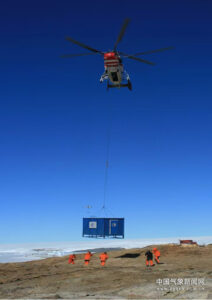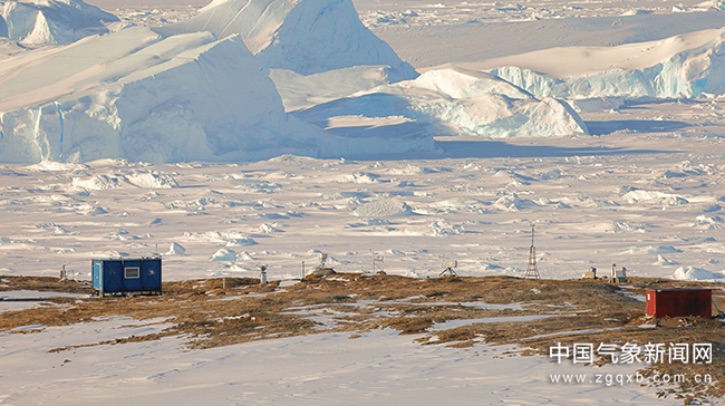China’s first overseas atmospheric background station has begun operating in Antarctica as part of the China Meteorological Administration’s plans to bolster the global response to climate change.
The station has already been running for 16 years but was only officially incorporated into China’s atmospheric background station portfolio this year. During the fourth International Polar Year (IPY) from 2007 to 2008, an observation shelter of atmospheric chemistry was constructed at the Zhongshan Station in Antarctica. This was equipped with ozone spectrometers and radiation monitoring instruments and kick-started the operation of atmospheric composition observation in Antarctica. In 2010, a high-precision greenhouse gas online observing system was built at the station and officially launched the continuous online observation of carbon dioxide and methane with high temporal resolution, enabling China to become the third country worldwide to be capable of conducting this operation in Antarctica. To date, a comprehensive observing system comprising seven categories of meteorological elements, including ozone and aerosol, has been set up at the station.

As a crucial component of the Antarctic Zhongshan Ice and Space Environment National Observation and Research Station operated by the Polar Research Institute of China, the atmospheric composition observation data of the Zhongshan Station has been included in the World Meteorological Organization (WMO) Antarctic Ozone Bulletin and State of Polar Climate by the China Meteorological Administration (CMA). The data has been used in scientific research into fields such as polar weather and climate change, and polar atmospheric chemistry.
According to the China Meteorological Administration, the Zhongshan National Atmospheric Background Station will conduct continuous and long-term operational observations of the concentration changes in Antarctic atmospheric components and offer a faithful presentation of the average state of the atmospheric composition and related characteristics in the region.
“Polar regions are regarded as ‘amplifiers’ of global climate change, and the observation data of the station possesses unique geographical advantages and scientific value,” said Ding Minghu, director of the Institute of Global Change and Polar Meteorology of the Chinese Academy of Meteorological Sciences.
Dr Cao Xiaozhong, deputy administrator of CMA, remarked, “Antarctica is the new ‘starting point’ of China’s meteorological endeavor.” He said that China’s meteorological departments will continue to thoroughly implement the operation and management of the station, give full play to the benefits of Antarctic meteorological observation data and draw the “Zhongshan Curve in Antarctica”, to enable deeper understanding, protection and use of Antarctica, make greater contributions to benefit mankind and build a community with a shared future for mankind.

In related news, China recently issued the Action Plan on Early Warning for Climate Change Adaptation (2025-2027), which includes launching three geostationary meteorological satellites to provide high-frequency meteorological disaster monitoring and cloud early warning systems for African, Asian and Pacific countries. Click here to read the full story.



